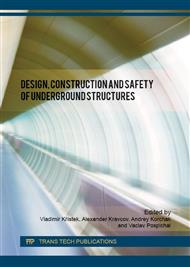p.45
p.51
p.59
p.65
p.72
p.81
p.87
p.93
p.103
Mathematical Model of the Painting Robot
Abstract:
The main objective of the research work was to construct a techno-mathematical model of the robotic arm for conducting painting work, which would streamline the speed and quality of work performed with respect to material savings. For research we chose a robotic arm that is commonly used in industrial production, and adapted it for our conditions. The mathematical model is designed to find the optimal trajectory for moving the robotic arm, where the emphasis is placed on minimizing the path length of motion of the robot ́s endpoint, thus reducing overall energy consumption for the building work. First, the optimal mathematical modeling method was chosen, it was selected according to conditions and parameters of the robotic arm. Thanks to the applied method we picked the software that helped to create the algorithm. Subsequently, a computer simulation and calculation of the optimal motion using a combination of virtual circles, sine and cosine theorem, was done. Further, we checked all relevant angles and calculation of the robotic arm rotation in space for each admissible variant. The last step was the selection of the optimal trajectory of the robotic arm in 3D space.
Info:
Periodical:
Pages:
72-80
Citation:
Online since:
July 2016
Authors:
Keywords:
Price:
Сopyright:
© 2016 Trans Tech Publications Ltd. All Rights Reserved
Share:
Citation:


